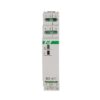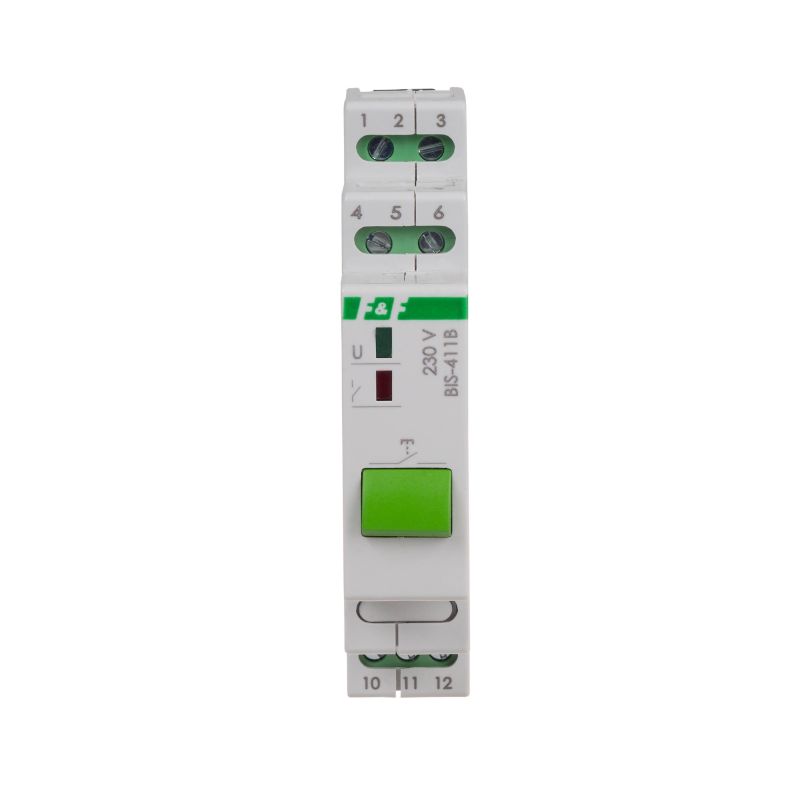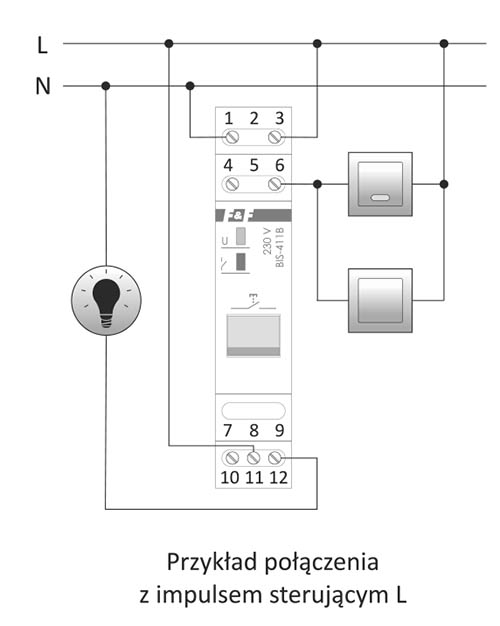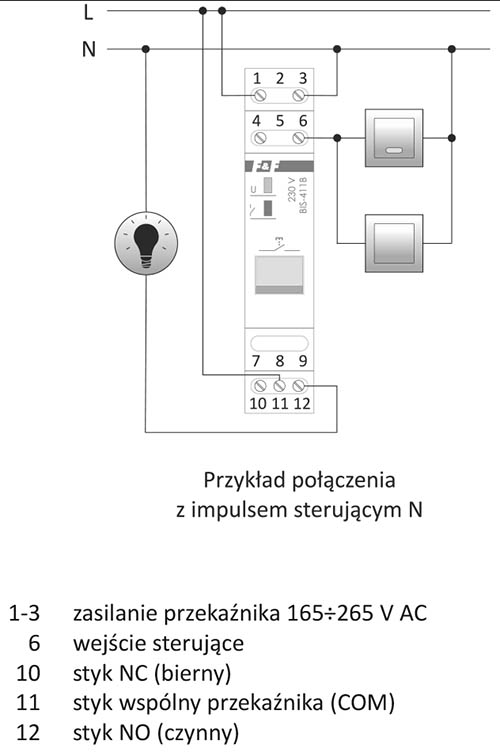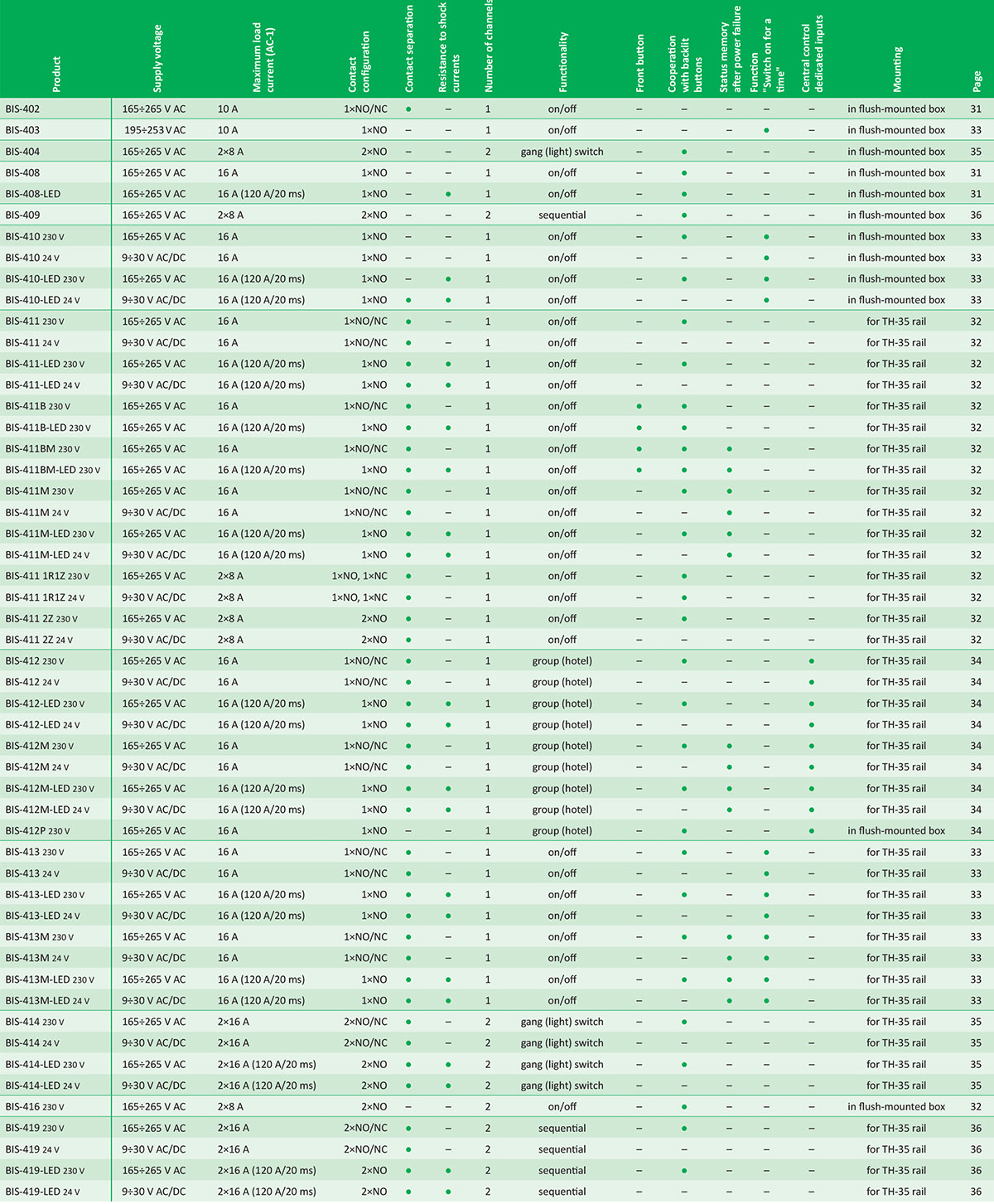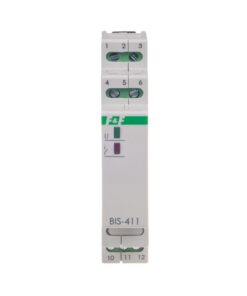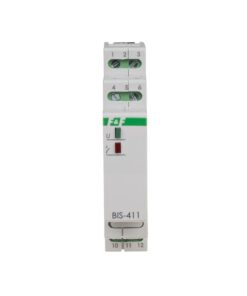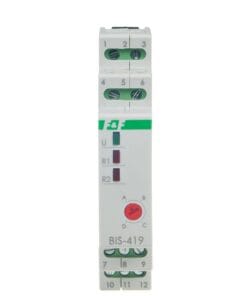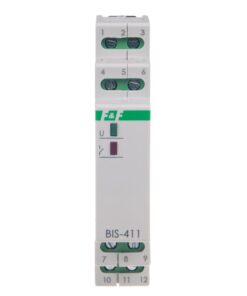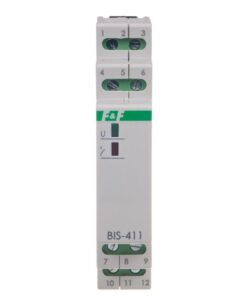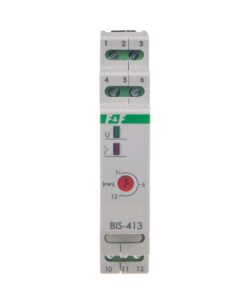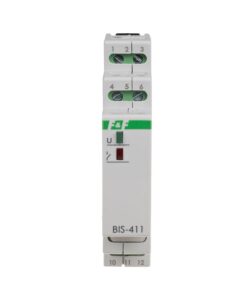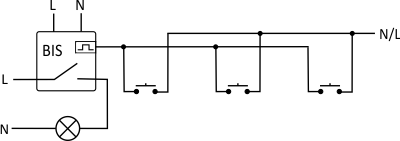
Functioning
The receiver is actuated by means of a current pulse triggered by pushing any bell push connected to the relay. The receiver is deactivated by another pulse or after a preset time.
The relay does not “memorize” the position of the relay contact, i.e. in case of supply voltage decay and the subsequent return of supply voltage, the relay contact will be set in the off position. Such a solution prevents the automatic actuation of the receivers controlled that might occur without proper supervision after a long-lasting decay of supply voltage.
Attention!
The BIS-411 and BIS-411i (230V versions) compatible with bell pushes equipped with fluorescent lamps. ![]()
Attention!
The BIS-411 and BIS-411i (24V versions) not compatible with bell pushes equipped with fluorescent lamps. ![]()
Power table

The above data are indicative and will depend to a large extent on the design of a specific receiver (especially for LED bulbs, energy saving lamps, electronic transformers and pulse power supplies), switching frequency and working conditions.
Tips
Illuminated buttons
If too many illuminated buttons are connected, the lighting may switch on spontaneously or switch on permanently Maximum load current The contact current given in the technical data is the maximum value and may be subject to restrictions – more information. If the information provided indicates that the relay in the device is insufficient, it is recommended to use an external switching element (e.g. contactor) adapted to switch large surge currents. State memory The relay does not have a “memory” of the contact position. This means that after the power supply is switched on, the relay contact will always remain in the off state.


